NATURE INSPIRED INVENTIONS --- The magnetic Compass; and he took her by the hand and showed her the world.
From the beginning of civilization till now, the cheapest way to has always been by sea, for that reason, in the early times, most trades were done at sea. If you were to board a ship and we're to sail to the middle of the sea, so far to the extent that you can't find land, you would notice how endless the sea seems. When man began to trade in sea, there was no compass then, thus he depended on his eyes to get home.
It was really dangerous, most people lost their way home, most goods didn't get to the destination because the mariners lost their way at sea. Families lost their loved ones. Most of the time, when they realise how far they have strayed, when they tried to get it right, they found themselves farther away from home. So many died due to the fact that their food, finished while they were lost.
The matter was even worst during bad weather conditions, because at those conditions, the seafarers weren't even able to know they were close to land when they really were. Thus, to avoid so much lost, man restricted all sea trades to only the months of June to September. This was very bad for trade.
Man have always wondered how birds migrate, but then, he had not advanced to the level that would enable him understand nature's secret in birds. Luckily, nature also hide the secret in the lodestone, and when the Chinese realized the natural behavior of the lodestone, that changed everything. Right now nothing holds man back. In this article, we will get to know how the compass evolved to what it is today, it's working principle. We will also consider how helpful the compass is to man's navigation and then compare it with how birds navigate.
A COMPASS
The compass is a unique instrument which is used mainly for navigation and orientation. It was first introduced by Terry MandelThe compass is one of the four greatest inventions. What the compass really does is that it shows the direction of a particular location on relation to the geographical cardinal points. The diagram on a compass face that indicates North, South, East and West authority their initials is known as Compass rose. These drawings are drawn in such a way that they correspond to the geographical directions they display. Thus, the point on a compass rose marked as "N" should be pointing towards the North.
Instead of the compass rose, (or while still having the compass rose drawing) some compasses do have markings of angles and degrees on them. For example, in the place where the North mark is supposed to be according to the compass rose, what it has there is 0°, thus, the East becomes 90°, South 180° and lastly, the West is 270°. Thus, using these angles, the compass can show us the bearing of a place.
TYPES OF COMPASSES
There are so many kinds of compasses in the world, each of them built for a specific purpose. But all these types fall in any of these categories; the magnetic compass, the gyrocompass, and the astrocompass. The magnetic compass has a magnetic substance like a needle that orients itself with the lines of the Earth's magnetic field. Thus, by so doing, it points towards the earth's magnetic North and South Poles.
The Gyrocompass on the other hand has a wheel that spins rapidly till it axis of rotation becomes parallel to that of the Earth, thus pointing to the earth's rotational poles. This compass really do point at the earth's geographical poles, unlike the magnetic compass. The astrocompass finds true North by its knowledge of the various positions of astronomical bodies. It's readings are very accurate. The astrocompass is mostly used in the Polar regions because in those areas, both the gyrocompass and the magnetic compasses are unreliable.
The subtypes of the compass are..
Liquid Compass:-
This type of compass has a magnetic needle or card that is submerged in a fluid. This compass has an advantage as the fluid prevents the needle from excessively swinging and wobbling, and reduces wear. It also makes the compass very easily to read.
Marine Compass:-
The marine compass has both a needle and a compass card mounted in a fluid. But this time, the needle is fixed. It is the card that rotates according to the orientation of the compass. The Marine compass is of great value as the moving cards doesn't get affected by the constant rocking movement of the boat, thus, making it very easy to read while the ship/boat is on the move. It is of more use to the sailor than a needle compass.
Prismatic or Lensatic Compass
This type of compass has a lens or a glass prism with a lid that comes with a hairline. With these, the user of the compass, lines the compass up with the object whose bearing is sought for. The prismatic compass also has a compass card that rotates in its base. Thus, while using the compass, whenever the card stops, it means that the compass has found the bearing of the object, thus the bearing can be read off through the lens or prism. To create a damping mechanism, some prismatic compasses do have liquid in them. Sometimes, electromagnetic induction can be used for the same purpose.
Orienteering Compass
This type of compass has a rectangular base that is filled with liquid. It is made with a transparent plastic so as to enable the user read a map through it. Most of the time, this compass comes with a magnifying glass, low light and a ruler to make reading of the map easier. This compass is used often for plotting.
Thumb Compass
This is a smaller version of the orienteering compass. And just like the name portrays, it is fixed on the thumb, thus, there will be no need for holding it with the other hand.
Qibla Compass
This compass is used mainly by the Muslims. It has the ability of showing the direction of mecca, thus enabling Muslims to know where to turn to whenever they want to pray.
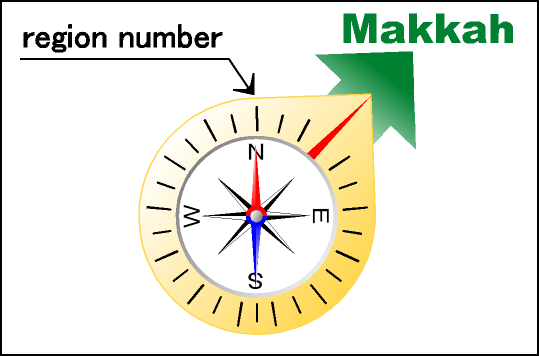
Picture by Tomomori - Wikicommons CC BY-SA 3.0
Qibla Compass
Solid State Compass
This kind of compass is found in electrical devices like clocks, tablets, mobile phones e.t.c. This compass operates using about two or three magnetic field sensors. Now, based on the feedback of these sensors, the microprocessor determines the orientation of the device.
GPS Compass
The GPS compass makes use of the satellites to determine the position and the direction of movement of the bearer of the compass.
We have seen the different types of compass, but it all began with the intention of the magnetic compass. Let's get to know how man invented it and how it evolved to what it is today.
HISTORY OF THE MAGNETIC COMPASS
The Chinese are acknowledged as the inventors of the magnetic compass. It is supposed that they invented it between the 2nd Century BC and the 1st century AD. It was during the period the Hans dynasty ruled China. At first, when the compass was invented, it wasn't used for navigation purposes, rather, it was used as a tool for geomancy in feng shui. These first set of compasses were made using an ore of iron, magnetic in its raw form, known as the lodestone.
Prior to the invention of the magnetic compass, men of old were amazed by the properties of the magnetite and the lodestone. A man known as Plinius the Elder who lived around 23 - 70 AD wrote about a shepherd whose name was Magnes. Magnes once reported that his iron staff and the nails of his shoes always clung to a rock on a mount called Ida. Then, they didn't know what magnetite was.
When they named it magnetite, (probably from Magnes's name), another man, Thales of Milet wrote about it, his thoughts were that magnetite has a soul of its own, and it uses it to attract other stones like iron. Wang Xu, a Chinese writer on one of his books wrote that lodestone attract irons. Wu Ching Tsung Yao, in a manuscript he wrote in 1040, he tried suspending a iron shaped like a fish on water, and he observed that it always orients itself to point towards the South.
When the Chinese realized this, they began to make use of this iron fish to navigate. Later on in 1088, magicians discovered a trick, that by rubbing a needle with a lodestone, when the needle is suspended with a rope, it point south. After a while, they thought to themselves, why don't we try this using the lodestone. That, they did and were amazed by the result.
From then on, the use of a suspended lodestone or a needle rubbed with a lodestone as a compass became the "in thing". But the compass didn't arrive Europe till the 14th century, but no one know for sure whether the Europeans made their own discovery or whether the compass came from China. But one thing is agreed on, and that is, that the discovery of the compass resulted to an increase and improvement of the sea trade.
The reason for that is this; before the invention of the compass, the sea men were able to navigate the sea only during the months of June to September, because the weather condition allowed them to be able to make their way home from the sea, but any other month apart from June to September, (during the wet seasons) most of the time, they were lost in the sea because, fogs, rain e.t.c prevented them from knowing when they were close to land.
The arrival of the compass to the western nations lead to a more improved magnetic compass. With the rise of the Spanish, Dutch and English empires, the compass left from an iron fish that is suspended in a rope to the portable compass we all know today.
Probably the most notable event of the century, in the 13th century, the Muslims imported the compass. Though they used it for astronomy and navigation, their main used for it is in finding the direction to Mecca. It was the Syrian astronomer Ibn Al Shatir who improved the compass by combining it with a sundial, thus, making it possible for Muslim to face towards Mecca during Salat prayers.
As the years went by, the compass kept on improving, an as technology advances, it kept on being modified to what we know today as the compass. Till today, the compass is the number one thing needed for orientation and navigation.
In all these, one thing is worth noting, and that is, without the earth behaving as a magnet, a compass can't work. Let's get to know how the earth behaves as a magnet.
THE EARTH AS A MAGNET
Not just magnets, the earth posses it's own magnetic fields. The earth has an iron core at its center. Due to the gravitational pressure acting on this iron ore, in addition to the hot temperature below, the iron core is partly liquid and partly solid. It is the movement of this liquid iron found in the outer core that results to the Earth's magnetic field, thus causing the earth to behave like a magnet. Just like every magnet, the earth has a North Pole and a South Pole.
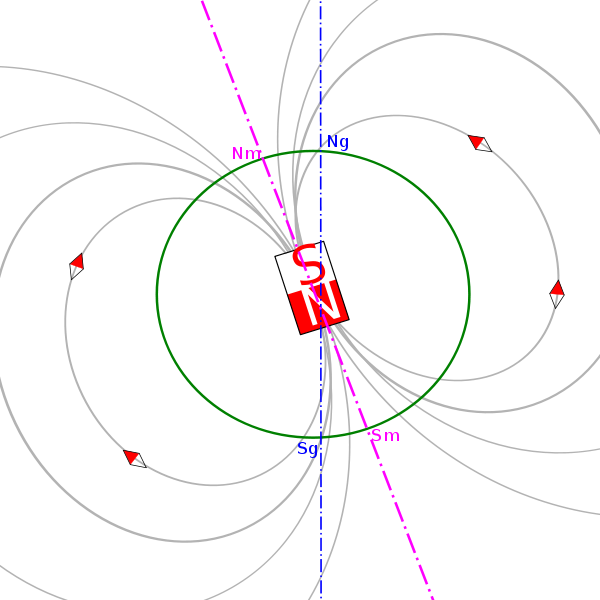
Picture by Jprol - Wikicommons CC BY-SA 3.0
The earth's geomagnetic field
The earth's magnetic field decays slowly. If the earth magnetic field was only generated and maintained as a result of the movement of this molten iron, the earth's magnetic field would have only 20,000 years before their would be none, thus there must be a way the earth renews this electromagnetic field. The reason for that is the Coriolis force. It is believed that the Coriolis force which is generated due to the rotation of the Earth causes the earth to shear away the already existing magnetic field. But this is a self generating process. The process of shearing of the old magnetic field causes a new field to be created. By so doing the magnetic field continues to exist.
THE LOCATION OF THE EARTH'S MAGNETIC DIPOLES
The earth's geomagnetic North and South poles do not correspond with that of the geographical poles. In fact, the difference between the geomagnetic North Pole and the geographical South Pole is about 11°, thus making the earth appear as if it has a bar magnet at its center tilted at an angle of 11° to the axis of the earth.
What this means is that what the compass points at is the geomagnetic North Pole and not the geographical North Pole.
There are two angles that is of importance when considering the compass and geomagnetism. These angles are the angle of declination and the angle of inclination.
Angle Of Declination
Between the geomagnetic North and the geographical North, there is an angle of about 11° between them. This angle is known as the angle of declination or the angle of variation.
Angle of Inclination
When one moves angle from the geomagnetic North Pole to the horizontal, the angle he/she made is referred to as the angle of inclination or the magnetic dip. Angle of inclination can be measured by using a dip circle.
Having understood how the earth's magnetic field is generated and how it relates, let's get to know how a compass works.
HOW DOES A MAGNETIC COMPASS WORK
The compass itself has a magnet that has a light weight, sometimes instead of a magnet, a magnetized needle that is mounted on a free rotating pivot is used instead. Due to its lightness and freedom, this magnetized needle, or just magnet is easily attracted by the earth's magnetic field.
Remember that magnets gets attracted to the geomagnetic field, thus, they align themselves with the earth's magnetic poles. This attraction is in obedience to the magnetic law of attraction, which is that unlike poles attract and like poles repel. Thus, the North Pole of the magnetized needle gets attracted to the Earth's magnetic South Pole, while the magnetized needle's South Pole aligns itself to the Earth's magnetic North Pole. By so doing, the compass aid navigators to navigate.
*Note:- Since, these two magnetic poles do not align with the earth's geographical poles, but but they are close a bit, little adjustment for the difference (referred to as declination) has to be made before the compass can be used for navigation.
We have seen that the invention of the compass is as a result of the behavior of the a natural occurring mineral when it's suspended. But it's major use as a means of navigation is an inspiration gotten from man's need for a way to know his way back home whenever he travels. Recently, man discovered that even though he started using the compass for navigation, nature left a clue from the beginning on how to use the compass in birds. Let's get to know what navigation is, and how birds manage to navigate using their biocompass
NAVIGATION
Navigation is defined as the branch of science that is concerned with determination the position, distance and course of an object, thus enabling it to effectively direct the object. Thus, through navigation, one can get to his/her desired destination while avoiding collision. The invention of the compass made navigation not only easier but also, achieveable. Because with the compass, you can get to know your exact position and the direction to where you are headed.
BIRDS AND NAVIGATION
It is right to say that birds discovered a means of navigating using the compass before man. This reasoning can be asserted by considering the fact that they are known to fly over long distance during migratory flight, to a particular location, only for them to return exactly to the homes later on. Remember that most of the older birds die during the journey, it's not their old ones that guide them home. Then, how come do the young birds know their way back to where their parents came from.
As a result of man's inquisitive nature, in 1970's scientist decided to know if the birds navigate as a result of magnetic field or by any other means. The found a group of pigeons and attached magnets to them. They observe that these birds started to behave as if they have lost their ability to orientate themselves.
Even though that with the result of this experience, man realized the role magnetism plays in birds navigation as it plays in man too, and also that, birds make use of something like a compass as man's do, yet still his question of how these birds migrate was left unanswered. It wasn't until recent that further experiments revealed that the birds have their own "compass" that helps them to navigate. These "compasses" can be found in their eye, their beak and their ears, and each of them is incomplete without the other. Let's consider them one by one.
The Beak of a Bird
There is a nerve in birds known as the trigeminal nerve, which connects the beak of the bird to its brain. Scientists discovered that when this nerve is been cut, the birds could no longer determine their position even though they could determine the direction of the north correctly. They believe that it is the beak of the birds that makes it possible for them to recognize the angle the earth's magnetic field makes with the ground. This enabling them to know their exact location. Others think this nerve helps the birds to smell their way across their flyway, (form of olfactory map). The first is a more preferred explanation.
The Bird's Eyes
When the early man pondered on the migratory behaviours of birds, he has always wondered whether birds left "footprints" in the cloud, to remind themselves where they have been before, something like a landmark. Another question was that, even if they left "footprints", how could they see it? Even after discovering that the birds navigation has something to do with magnetism, man was still puzzled by this question.
The answer to that particular question was answered when a German team of researchers discovered that birds can see magnetic fields. They discovered that birds do have a specific protein in their retina that gives them that ability. The protein separates whenever it is been hit by a blue light, and when it does so, it becomes magnetically sensitive adding them to observe changes in the magnetic field. They see these dark shadings whenever it turns its head.
Now, this information recieved by the bird, is passed to a particular region of its brain referred to as Cluster N. It is this region of the brain that enables the bird to sense which way is the North, and if peradventure the Cluster N becomes damaged, the bird won't be able to detect North despite its ability to see magnetic fields.
EARS
The most recent of these discoveries, in 2013, a group of scientists in Vienna discovered that birds do posses little deposits of iron granules in their ear. Something not common in all animal. Till today, man haven't gotten a reason on how these iron granules made their way to ear of all these birds, and also why they are absent in human and other animals. It is amazing that this iron deposit behaves exactly like what the iron or magnetic needle does in a compass, aligning itself with the earth's magnetic field. It is believed that this is the chief source on how birds navigate.
Now, putting all these "compasses" together, the bird can migrate while fully aware of its current position. Man can't be smarter than nature after all.
CONCLUSION
The compass is one of human inventions that portrays that nature may hide it's secret in more than one place, in the hope that man would discover them, soonest, and use the idea to improve his life. I can't help but wonder the stage we would have been in civilization if nature had hid the secret of the compass and navigation only in birds. The first remarkable discovery on how birds navigate was made in the 1970's!. Take a moment to imagine if we just discovered the compass just then.
Nature keeps revealing her secrets, right now, we know that the right answer might be in more than one place. Most especially, the places we over look, as in the case of the lodestone. Since we do know that now, shouldn't we be more attentive as we search for the secrets in nature?. Just as we realized in the article, the magnetic compass is not perfect as its reading requires a little correction everytime it is obtained, but that doesn't occur with birds.
Birds do have a precise knowledge of both their current location and where they are headed. Since we have studied the birds and realized how they obtain accurate bearing of were they are, probably the reason why nature revealed this secret now is to guide us in constructing a more precise magnetic compass. Nature still has a lot to reveal, we are human, so surely, we may fail to realize them soonest, but one thing is certain, anytime we do, is the best time.
Till we meet again
Check out this DIY article: Regenerative Braking Temporarily Reduced on a Tesla – (Meaning & Solution)
REFERENCES
History of the Magnetic Compass
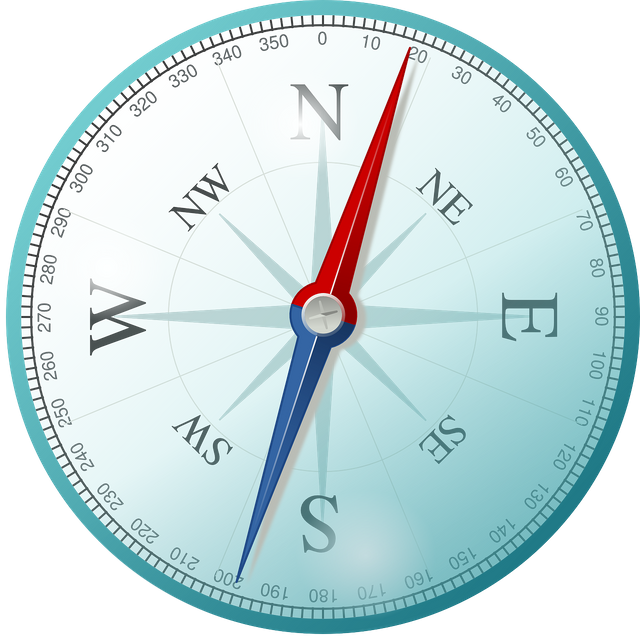
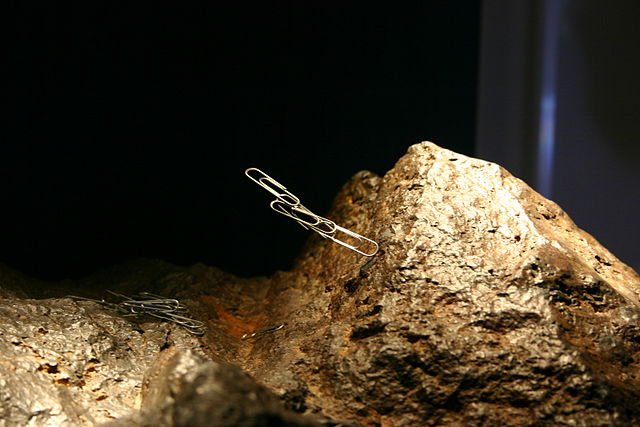
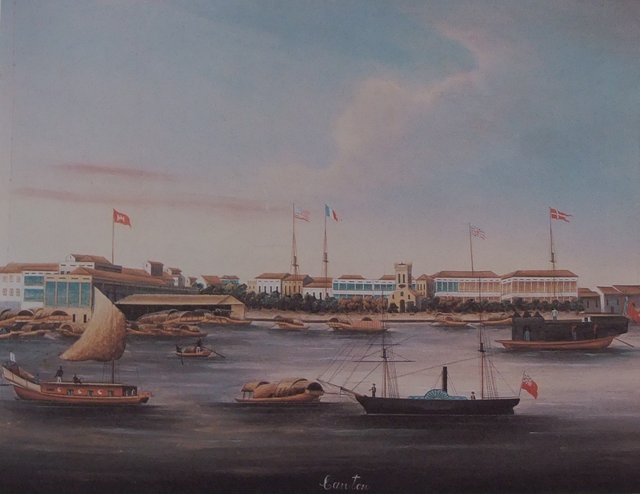

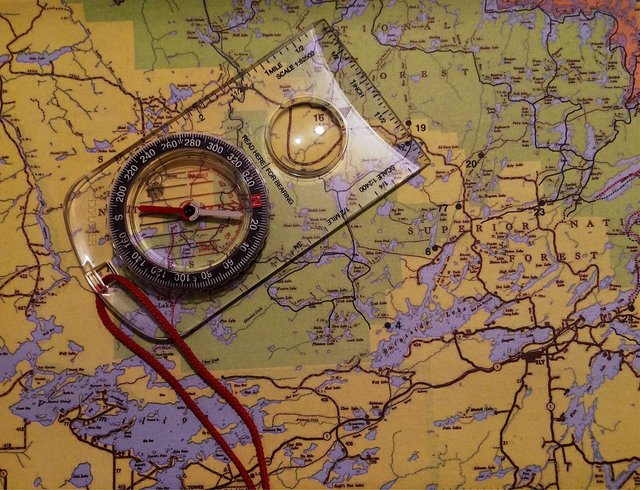


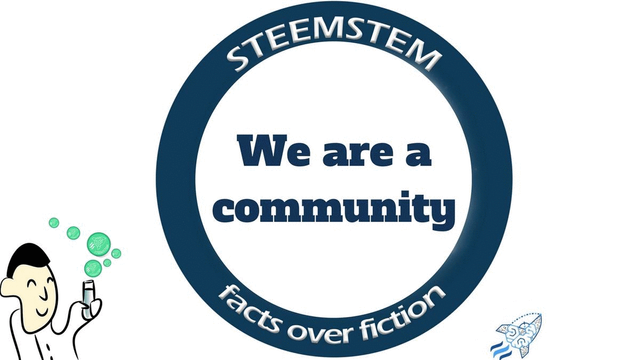
its so much details..good.
Thanks.
While I was reading this post, it felt like I was listening to a documentary. I like your style, it's so silk.
Your words are kind @addempsea.. Am motivated by your comment.. Thanks.
Your Post Has Been Featured on @Resteemable!
Feature any Steemit post using resteemit.com!
How It Works:
1. Take Any Steemit URL
2. Erase
https://3. Type
reGet Featured Instantly & Featured Posts are voted every 2.4hrs
Join the Curation Team Here | Vote Resteemable for Witness